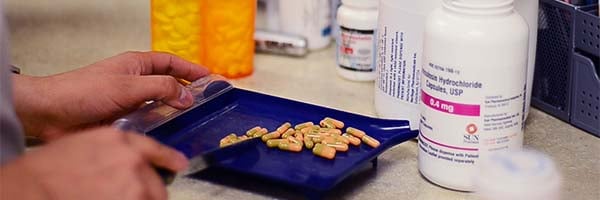At least 125,000 Americans die annually due to poor medication adherence, or patients not taking their medications as prescribed.
Prescription non-adherence is a very real problem. So real, in fact, that it’s responsible for $290 billion in unnecessary healthcare costs each year, or 13% of total healthcare expenditures.

When we’re looking at hundreds of thousands of lives and a couple hundred billion dollars in unnecessary healthcare costs each year, the importance of medication adherence becomes extremely evident. Here are four ways telepharmacy can help improve medication adherence.
Convenience
When we talk about telepharmacy in rural, underserved communities, we talk about convenience. If your community has a provider but no pharmacy, you may have to travel 25+ minutes to the nearest city in order to fill your prescriptions. That’s inconvenient and can lead to higher rates of patient non-adherence. Telehealth services, like telepharmacy, offer us the ability to bring care to patients the same way that doctors used to make house calls.
- The bottom line: patients are demanding that care comes to them. Through telepharmacies, or remote-dispensing sites, we can make the pharmacist more accessible to patients in rural communities (as well as underserved urban areas).
Hospital readmission rates
Remember that $290 billion? Pretty astonishing, huh? It becomes even more astonishing when you add a 3% readmission penalty due to patients being readmitted to a hospital (for whatever reason) within 30 days of discharge. Hospitals need to focus on curing the patient as a whole (value-based care) and not just treating their current symptom. Health systems operating on-site telepharmacies can reduce readmission rates through convenient, point-of-care dispensing and increased patient education.
- The bottom line: in 2015, 3 out of every 4 hospitals experienced a Medicare reimbursement penalty. That cost, along with the cost of poor medication adherence, can be reduced through telepharmacy.
Click here to learn more about telepharmacy for health systems.
Creating a relationship with pharmacy staff
"A chief predictor of non-adherence is the presence or absence of a personal connection with a pharmacist or pharmacy staff."
- Medication Adherence in America, NCPA
Imagine any setting where you could use the skills and expertise of a pharmacist. Telepharmacy allows that vision to become a reality. Through telepharmacy, pharmacists are able to influence patient outcomes like never before.
- The bottom line: by increasing access to pharmacy-care services through telepharmacy, we’re allowing patients to establish a relationship with a pharmacist.
Focus on Clinical Activities
Nearly ⅓ of patients report that the pharmacist looked too busy to speak with them about their personal medical concerns.
- Consumer Reports Annual Questionnaire 2014
Through telepharmacy, pharmacists are able to shift their focus to more clinical activities. By getting out from “behind the counter,” pharmacists can perform immunizations, CMRs, TIPs and various health-testing services.
- The bottom line: telepharmacy frees up the pharmacist from behind-the-counter activities so they can utilize their expertise to impact health outcomes through clinical activities.
Interested in learning more? Is telepharmacy approved in your state? Learn more about regulations here:


